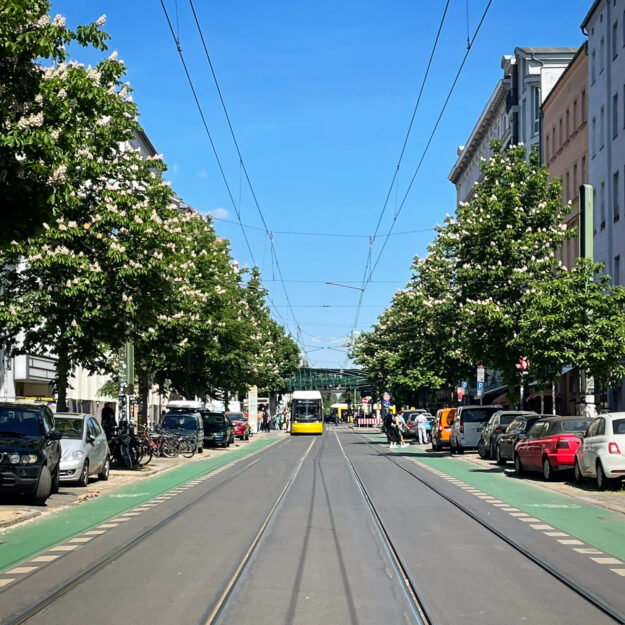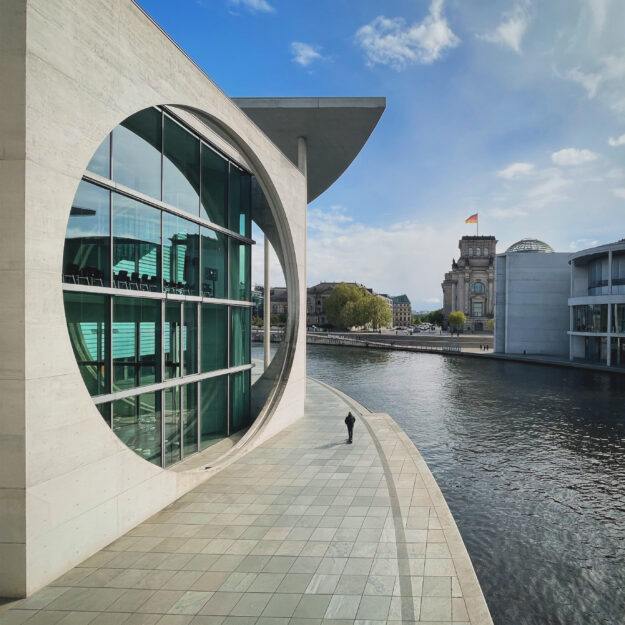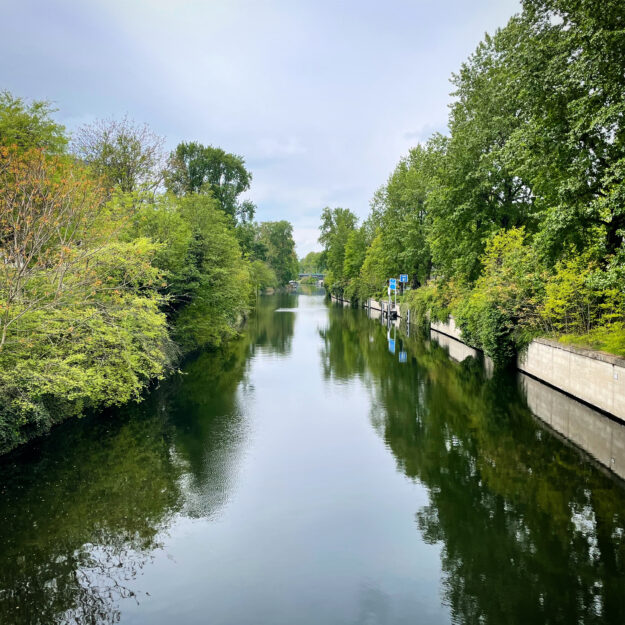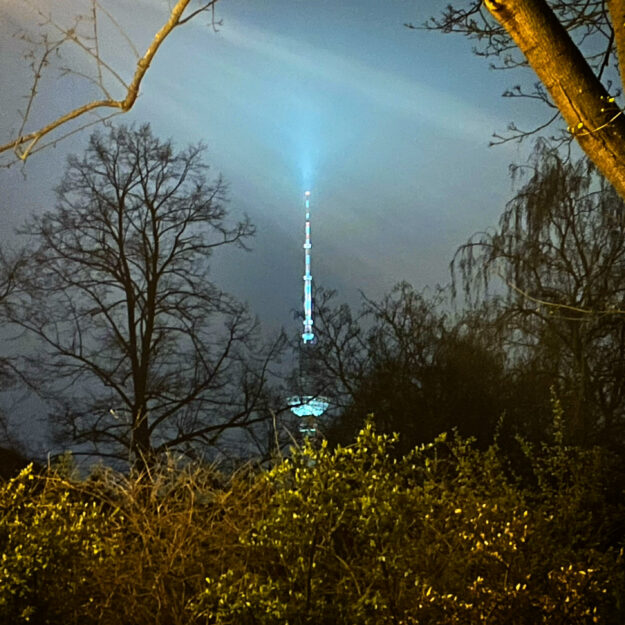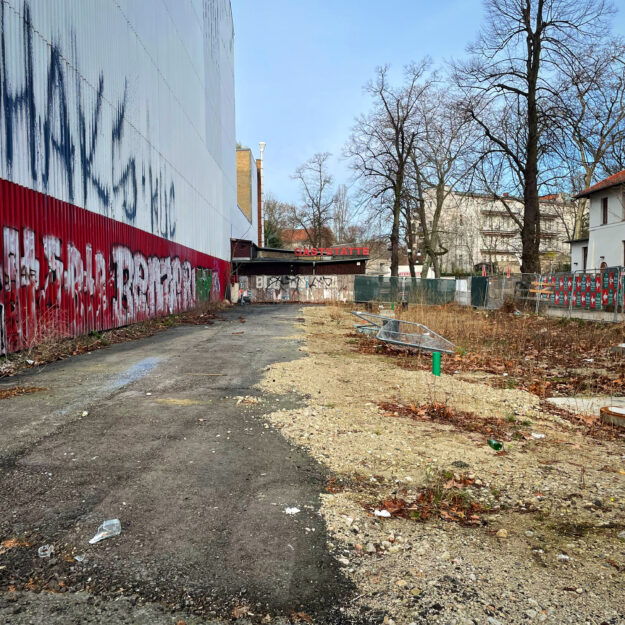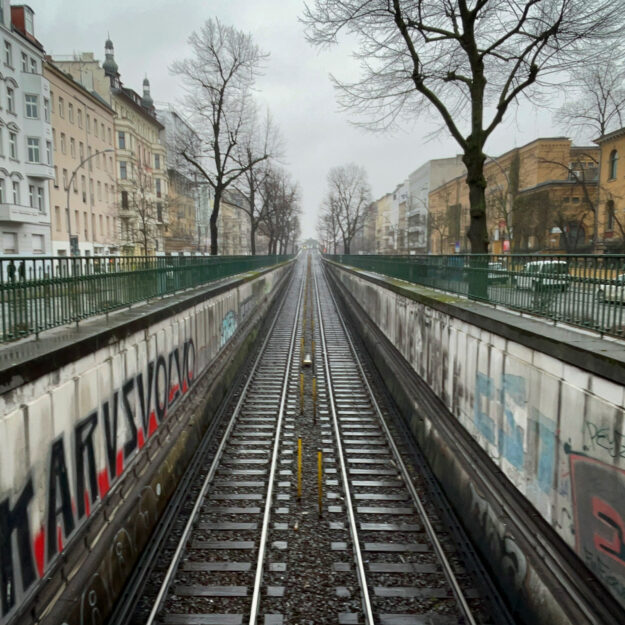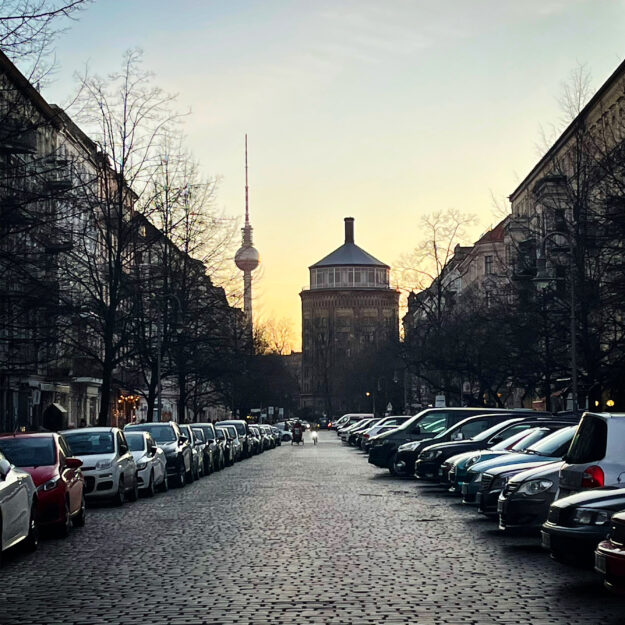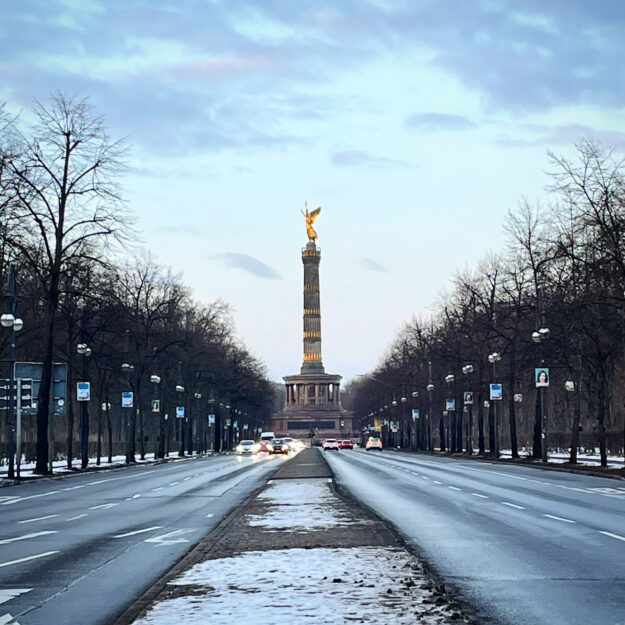View of Kastanienallee in the direction of the Schönhauser Allee intersection. The viaduct of the U2 underground line can be seen in the background and a streetcar is parked at the streetcar stop. The chestnut trees are in full bloom.
Chestnuts on Kastanienallee
